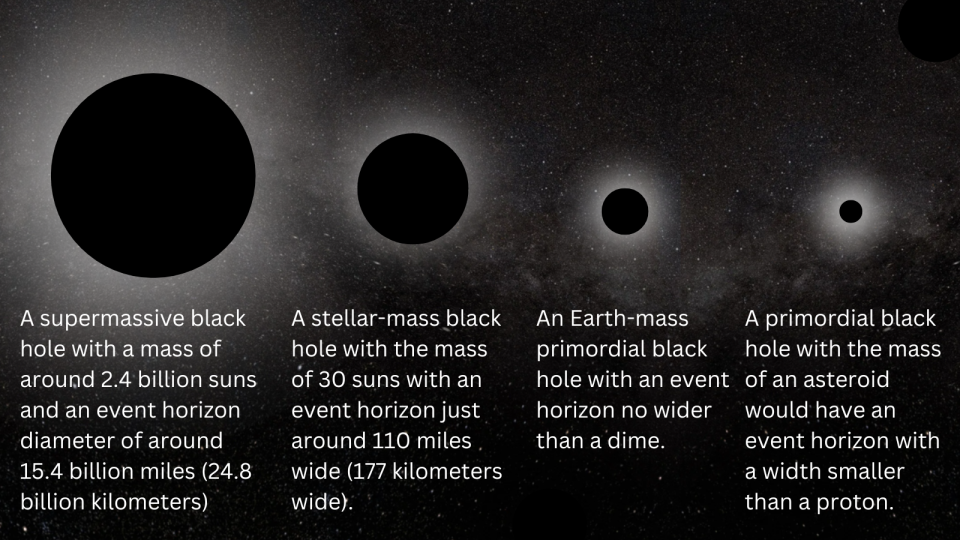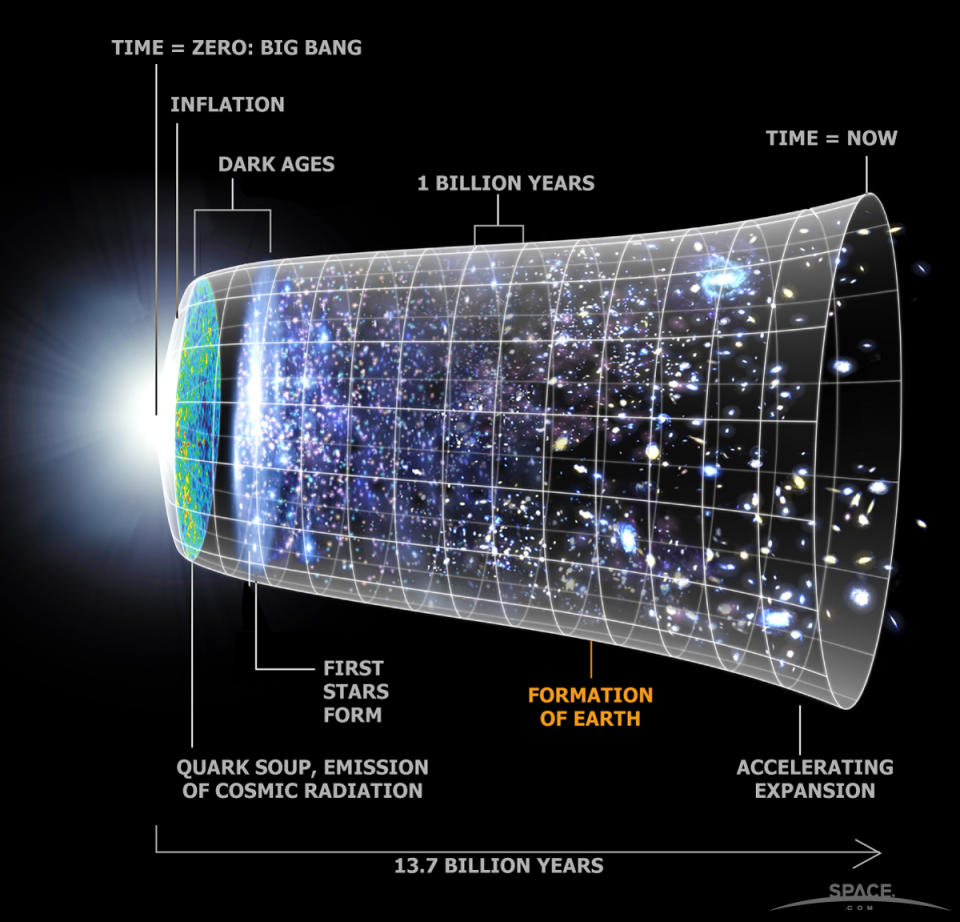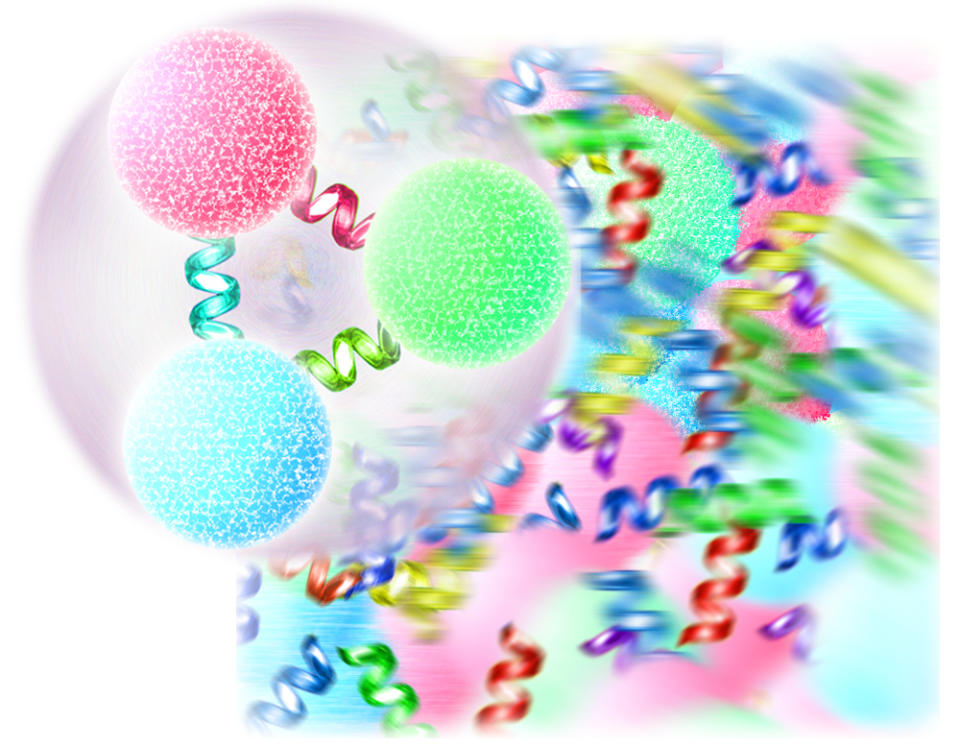Small, primordial black holes that formed in the first fraction of a second after the Big Bang may have had company, in the form of even smaller supercharged black holes with the mass of a rhinoceros that quickly evaporated.
A team of researchers has theorized that these tiny rhino black holes, which would represent an entirely new state of matter, would be filled to the brim with “color charge.” This is a property of fundamental particles called quarks and gluons, which are related to their strong force interactions with each other, and not related to ‘color’ in the everyday sense of the word.
These supercharged black holes are thought to have formed together with primordial black holes when microscopic regions of ultra-dense matter collapsed in the first quintillionth of a second after the Big Bang.
Although these newly theorized black holes may have evaporated just a fraction of a second after their formation, they may have influenced an important cosmological transition: the forging of the first atomic nuclei. That means they may have left a signature that is still detectable today.
Related: If the Big Bang created miniature black holes, where are they?
The research team thinks that super color-charged black holes may have influenced the balance of merging nuclei in the early universe. Although the exotic objects ceased to exist in the first moments of the cosmos, future astronomers may still be able to detect this influence.
“Even though these short-lived, exotic creatures no longer exist today, they could have influenced cosmic history in ways that could show up in subtle signals today,” said co-author David Kaiser, professor of physics at the Massachusetts Institute of Technology. (MIT), said in a statement.
“Within the idea that all dark matter can be explained by black holes, this gives us new things to look for,” he added, referring to the mysterious substance that makes up about 85% of the material universe.
Not all black holes are created equal
When you imagine a black hole, you immediately think of cosmic titan-like supermassive black holes with masses millions or even billions of times greater than that of the Sun. These black holes reside at the heart of galaxies, dominate their environment, and are created by a chain of mergers of increasingly large pairs of black holes.
More common in the universe are black holes with masses tens or hundreds of times that of the Sun, which form when massive stars run out of fuel for nuclear fusion and collapse.
These two types of black holes, as well as the elusive intermediate black holes between these two mass ranges, are classified as ‘astrophysical black holes’. Scientists have long hypothesized that there once were non-astrophysical black holes born just after the Big Bang, with masses between those of Earth and those of a large asteroid.
Rather than having formed from the collapse of a star, these primordial black holes could have formed from much smaller pieces of collapsing matter before the first stars or even the simplest atoms had even formed.
The more massive a black hole is, the wider its outer boundary or ‘event horizon’ is. If a primordial black hole had a mass around that of Earth, it would have been no bigger than a dime. If it had the mass of a large asteroid, it would have been smaller than an atom.

The reason we use the past tense when describing these black holes is because current theories suggest that these original black holes would have been so small that they quickly lost mass by “leaking” a type of thermal radiation called Hawking radiation is called. This would have resulted in their evaporation, meaning they would no longer exist in the universe today.
Some scientists have proposed “rescue mechanisms” that could allow primordial black holes to persist into the modern era of the cosmos. If these mechanisms are valid, primordial black holes may actually be responsible for dark matter.


Dark matter is so mysterious because, despite representing about 85% of the matter in the universe, it does not interact with light and thus cannot be the same as the other 15% of ‘stuff’ in the cosmos that includes stars. planets, moons, our bodies and the cat next door.
Primordial black holes would be a good fit for dark matter because, like all black holes, they would be bounded by the event horizon. These are light-trapping surfaces that also mean that black holes, like dark matter, do not emit or reflect light.
To better investigate the relationship between dark matter and primordial black holes, Kaiser and MIT student Elba Alonso-Monsalve set out to find out what these small and early black holes are (or were) made of.
“People have studied what the distribution of black hole masses would be during this production in the early universe, but never linked this to what kind of material would have fallen into those black holes at the time they formed,” explained Kaiser out.
The black hole’s original companions were supercharged rhinos
The first step for the two researchers was to look at pre-existing theories about primordial black holes and how their mass would have been distributed during the formation of the universe.
“Our realization was that there is a direct correlation between the time at which a primordial black hole forms and the mass with which it forms,” Alonso-Monsalve explains. “And that time frame is absurdly early.”
In this case, “absurdly early” means within a quintillionth of a second after the Big Bang. In this short period, ‘standard’ primordial black holes would have emerged with masses around that of large asteroids and widths smaller than an atom.
Yet Alonso-Monsalve and Kaiser predict that this short period would also have seen the birth of a small fraction of exponentially smaller black holes, with masses around that of a rhinoceros and sizes much smaller than a single proton, the particles that (together with neutrons) form the nuclei at the heart of atoms.
Both sizes of black holes in the early universe would have been surrounded by a dense sea of quarks and gluons. These elementary particles cannot be found freely in the universe in the current era, because they are trapped in particles such as protons and neutrons. However, in the dense early universe there existed a ‘hot soup’ or plasma of free quarks and gluons that had yet to be combined.
Not only would all the black holes formed in the early universe feed on this plasma soup, but they would also absorb a property of free, unbound quarks and gluons called color charge.
“Once we discovered that these black holes form in a quark-gluon plasma, the most important thing we had to figure out was: How much color charge is in the blob of matter that will end up in a primordial black hole?” said Alonso-Monsalve.


Based on a theory called ‘quantum chromodynamics’, which describes the action of the strong force between quarks and gluons, the duo calculated the color charge distribution that should have existed in the hot, dense plasma of the early universe. They then compared this distribution to the size of a region that could collapse in just the first quintillionth of a second of the cosmos and create a black hole.
This showed that the ‘typical’ primordial black hole would not have absorbed much color charge. This is because the larger area of the quark-gluon plasma they consumed would have contained a mix of color charges, which added up to a neutral charge.
However, black holes with the mass of rhinos, formed from a smaller piece of quark-gluon plasma, would be packed with color charge, the duo discovered. In fact, they would contain the maximum amount of charge allowed for a black hole, according to the fundamental laws of physics.
This isn’t the first time such “extremal” black holes have been hypothesized, but Alonso-Monsalve and Kaiser are the first scientists to lay out a realistic process by which such cosmic oddities could actually have formed in our universe.
RELATED STORIES
— For the first time, dark matter has been detected dangling from the cosmic web
– How the successor to the Large Hadron Collider will hunt for the dark universe
– A huge galaxy without dark matter is a cosmic puzzle
Although the rhino supercharged black holes would have evaporated quickly, they could still exist about a second after the Big Bang, when the first atomic nuclei began to form. This means that rhino black holes would have had ample time to unbalance conditions in the cosmos. These disruptions could have affected the matter in ways that can still be observed today.
“These objects may have left some exciting observational prints,” Alonso-Monsalve concluded. “They could have changed the balance between this and that, and that’s something you can wonder about.”
The team’s research was published Thursday (June 6) in the journal Physical Review Letters.